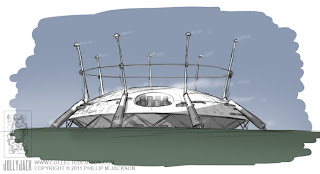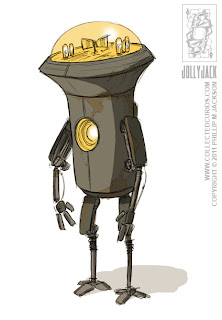(Subject to minor changes)
(EFH – Existing Fallout History)
1940(August) Construction of bunker-network begins beneath London. Because of their depth, they are dubbed “The Hardwigg Network” after a character from “Journey to the centre of the Earth”.
1951(November) Over fears of Soviet ambition and the rise of nuclear threats, Winston Churchill authorises ongoing expansion of The Hardwigg Network. It continues over the course of the next century and becomes an integral part of all plans relating to the survival of government and British culture in the event of atomic war.
2060(June) (EFH) War in Middle East ends as the oil fields run dry.
(October) Russia ceases sale of gas to Europe.
(November) The Super-tanker, Titan Merridian, leaves the Persian Gulf with the last major shipment of oil from the region.
(November) Balkans descend into civil/ethnic warfare. Genocide and anarchy follows.
(November) Italian economy collapses. Government collapse follows under civil unrest.
(November) Spain seizes control of Gibraltar, and with it; control of the Straight. Piracy in the region escalates.
(November) The boarders between Germany and France are hastily fortified in anticipation of imminent conflict.
(November) Central EC states collapse as power fails and shipment of food becomes impossible through fuel shortages. Refugees from these nations head west into France and Germany. Humanitarian crisis ensues.
(November) Britain effectively closes the English Channel when it activates the atomic minefields around its coastline.
(December) The Titan Merridian is hijacked off the coast of Africa. Remaining EC governments accuse on another of its theft.
(December) (EFH) The European Commonwealth collapses.
2061(February) The Titan Merridian is spotted in Atlantic by a French submarine. This submarine is destroyed by an unidentified vessel.
(April) The Titan Merridian is seen entering British territorial waters. France and Germany accuse Britain of piracy, which Britain vehemently denies, even when confronted with satellite photos of the ship entering a British port.
(May) A German/French military coalition begins long-range bombardment of Britain. Britain returns fire. The continued exchange is dubbed “The Thrift War”, with neither side willing to spend precious resources on a grand offensive
2065(January) Heavy British bombardment on French/German civilian centres.
(March) The German/French coalition begin an invasion of Britain. After enormous casualties inflicted by the island’s defences, they make a beach-head at Hastings. An extended trench war in the area follows.
2067(September) British Home Secretary, Nathan Maxwell, proposes use of tactical nuclear weapons to break the stalemate on the South coast. It is tentatively approved and the area is bombed. National protests follow and plans for further use of such weapons are shelved.
2068(January) The German/French coalition deem the Hastings beach-head untenable and retreat.
(February) French government collapses under civil unrest.
(April) Germany splits into 3 warring regions.
2069(March) Major energy shortages in Britain. Only key cities receive power as the national grid begins to shut down.
(May) In an effort to divert public attention from the ongoing energy crisis, Britain invades and seizes control of northern French coastal regions with the aim of capturing remaining resources.
(July) British pharmaceutical giant, GlaxoSmithe, begins a collaborative effort with U.S. Biomedical research company, West-Tek in the development of a stabilizing agent for potential countermeasure to New Plauge.
2071(April 4th) “The 4th Day Alliance” is established in former French city of Strasbourg. It is a brutal collective of military leaders from the fallen European Commonwealth. They begin massing weapons with the intention of restoring “justice and order” to Europe, starting with the destruction of Britain.
2072(May) The “War in the Air” over France between British and 4th day aircraft begins.
(July) French coast is lost to 4th Day forces as Britain retreats back across the channel.
(August) First major bombardment of London from 4th Day missiles is thwarted by the city’s Skywatch defence system.
(August) Sky over Southern England is “burnt” by 4th Day superweapon. Resulting ozone hole, while temporary, does major damage to flora and faua.
2073(February) GlaxoSmithe begins independent development of the 40 series; biological compounds based on earlier joint endeavours with West-Tek.
(April) GlaxoSmithe deems Compound 47 weapon-ready.
(April) C47 payloads dropped on 4th Day positions in Northern France. Exact effects are not recorded, but 4th Day retreat east almost immediately and are not heard from again.
2074(EFH) International Oil Talks. Britain, Finland, Sweden and Norway are the only nations from Europe capable of attending.
2076(June) (EFH) West Tek research falls under direct supervision from US Military. Collaboration with GlaxoSmithe ends.
(July) The unpopular abolishment of the Monarchy in Britain. The Prime Minister announces to formation of the “United Republic of Great Britain” and makes his infamous “New Empire” speech, which world leaders condemn as “Ill timed” or “Warmongering”.
(November) Skywatch is sabotaged. Efforts to repair it are hampered by the worsening energy crisis, general lack of materials and civil unrest.
2077(October 23rd) (EFH) The Great War. Britain is destroyed. Skywatch fails and London is obliterated.




